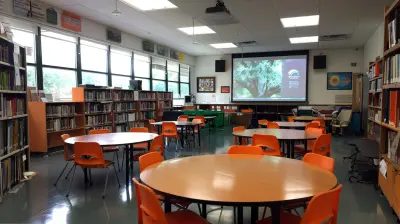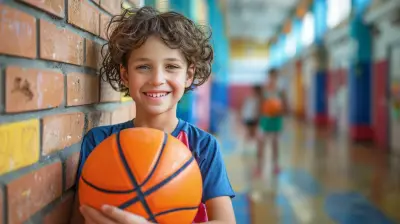How to Teach Critical Thinking to Young Minds
14 October 2025
Have you ever watched a child ask “why?” over and over again? It might seem repetitive—or even a little annoying—but that curiosity is the first spark of critical thinking. Kids naturally question the world around them. Our job is to help them harness that curiosity into thoughtful exploration, logical reasoning, and sound problem-solving.
Teaching critical thinking to young minds isn't just about helping them do well in school. It's about preparing them for life. Whether they're solving a math problem, navigating a friendship, or deciding what to believe, critical thinking can guide them toward better choices.
Let’s dive into how you can nurture this skill in the young learners around you.
What Is Critical Thinking, Really?
Before we teach it, let’s get clear on what critical thinking actually means. Simply put, critical thinking is the ability to think clearly and rationally, understand the logical connection between ideas, and evaluate arguments and evidence.It’s not about being critical in a negative sense. It’s about being thoughtful. It’s about asking, “Does this make sense?” “What’s the evidence?” and “Is there another side to this?”
Imagine giving a child a box of puzzle pieces and asking them to put them together. They don’t just start gluing random pieces—they look for patterns. They test, try again, and slowly see the bigger picture. That process? That's critical thinking in action.
Why Critical Thinking Matters for Kids
You might wonder—why bother teaching kids critical thinking so early? Aren’t they too young to grasp complex ideas?Actually, kids are wired for it! Their brains are like sponges, soaking up everything. Teaching them to think about what they absorb makes a world of difference.
Here’s why it matters:
- Encourages Curiosity: Critical thinkers don’t just accept the status quo. They ask questions and seek to understand.
- Builds Confidence: When kids can evaluate situations and make informed decisions, they feel more capable.
- Improves Problem-Solving: From playground dilemmas to school projects, kids learn to approach problems logically.
- Protects Them from Misinformation: In a world full of information (and misinformation), critical thinking helps them spot what's real.
Think of it as giving them a mental toolkit. Instead of feeding them facts, we teach them how to navigate the vast world of knowledge with discernment.
When to Start Teaching Critical Thinking
Good news—you can start right now. Whether you're a teacher, parent, or caregiver, kids as young as three or four can begin learning the basics of critical thinking.You don’t need fancy curricula or expensive tools. All it takes is intentional conversations and opportunities that challenge their brains to stretch a bit further.
How to Teach Critical Thinking to Young Minds
Let’s get into the how. Teaching critical thinking doesn’t mean sitting kids down with philosophy books. It’s about weaving thoughtful approaches into everyday moments.1. Encourage Questions
Remember when we talked about the “why” phase? Don’t shut it down—lean into it.Instead of rushing to answer, turn the question around:
- “That’s a great question! What do you think?”
- “Hmm, let’s figure that out together.”
By doing this, you empower children to explore their own reasoning. You’re not just giving them a fish; you’re teaching them to fish.
2. Model Thoughtful Thinking
Kids learn by watching us. So, let them see your thought process.Say you’re choosing between two brands at the store. You might say:
- “This one is cheaper, but the other has better reviews. What do you think is more important in this case?”
Narrating your decision-making teaches them that thinking things through is normal—and important.
3. Read Books That Spark Discussion
Choose stories that have moral dilemmas, unexpected endings, or relatable conflicts. After reading, ask:- “Why do you think the character did that?”
- “What would you have done differently?”
- “Was that a fair decision?”
Books are a safe space for kids to explore big ideas and different perspectives.
4. Play Games That Build Brain Muscles
Critical thinking can be fun—seriously! Try these:- Board Games like Chess, Connect Four, and Clue
- Puzzles that require planning and logic
- "Would You Rather" Questions that spark debate
Games make learning feel like play. They get kids to weigh options, plan ahead, and consider consequences—without even realizing it.
5. Teach Them to Spot Assumptions
Kids often make snap judgments. That’s natural. But you can gently challenge them.Let’s say a child says, “Math is too hard for me.” You can ask:
- “What makes you say that?”
- “Was there a specific part that was tricky?”
- “What could we do to make it easier?”
By helping them slow down and unpack their thoughts, they'll begin to question their own assumptions.
6. Offer Open-Ended Problems
Instead of asking questions with one right answer, try questions where there’s room to explore:- “What are all the ways we could use this object?”
- “How could we get this toy out from under the couch without moving it?”
Such questions invite creativity, logic, and strategy—all key elements of critical thinking.
7. Embrace Mistakes as Learning Opportunities
Critical thinking thrives in a “fail-friendly” environment. When kids mess up, it’s not the end—it’s the beginning of understanding.Celebrate their effort and exploration:
- “I love how you tried something new!”
- “What do you think went wrong, and how could we try it differently next time?”
This helps them reflect, not retreat.
8. Introduce Simple Logic and Cause-and-Effect
Even little ones can understand cause and effect. Use real-life examples:- “If you don’t water the plant, what might happen?”
- “What do you think happens if we mix red and blue paint?”
These bite-sized experiments engage their natural curiosity and teach them to connect dots logically.
9. Discuss Media and Ads Thoughtfully
Yes, even kids’ shows and YouTube videos can become learning moments.Ask:
- “What do you think the message of this ad is?”
- “Why do you think they want us to buy that toy?”
- “Do you think that’s how things work in real life?”
This sets the foundation for media literacy—a huge part of modern critical thinking.
10. Practice Empathy and Perspective-Taking
Critical thinking isn’t only about logic—it’s also about understanding others.Encourage kids to consider different viewpoints:
- “How do you think your friend felt when you said that?”
- “Why might someone believe something different?”
Empathy stretches young minds in powerful ways. It teaches them to think beyond their own experiences.
Use Everyday Moments as Teachable Opportunities
You don’t need to set aside special time for teaching critical thinking. The magic is in the every day. Whether you’re baking cookies, taking a walk, or watching a movie, there are constant opportunities to ask questions, make predictions, analyze outcomes, and reflect.Think of critical thinking like a muscle. The more we flex it in everyday life, the stronger it becomes.
Be Patient. Growth Takes Time.
Teaching critical thinking isn't about checking off boxes. It’s about planting seeds.Some days, kids will resist. Some days, they’ll amaze you with their insights. What matters most is that you keep showing up, providing guidance, and modeling thoughtful exploration.
Celebrate progress, not perfection.
Final Thoughts
Teaching critical thinking to young minds is one of the greatest gifts we can offer. It equips kids not just to ace a test, but to live wisely and think clearly in a noisy world.It’s not about having all the answers. It’s about helping them ask better questions. It’s about giving them the confidence to wonder, to challenge, and to grow.
So the next time a curious little voice asks, “Why?”, smile and lean in. That’s where the magic begins.
all images in this post were generated using AI tools
Category:
Child DevelopmentAuthor:

Olivia Lewis
Discussion
rate this article
1 comments
Soren Mercado
This article provides valuable insights into fostering critical thinking in children. By encouraging curiosity, promoting questioning, and integrating real-world problem-solving activities, educators and parents can equip young minds with essential skills for analysis and reasoning, preparing them for future challenges. Well done!
October 19, 2025 at 4:19 AM

Olivia Lewis
Thank you! I'm glad you found the insights valuable. Encouraging curiosity and real-world problem-solving is key to nurturing critical thinking in children.


